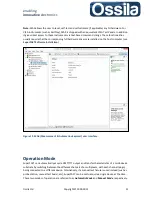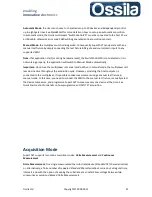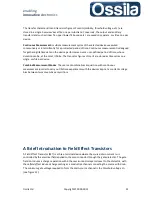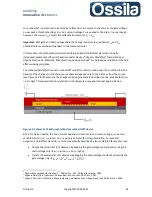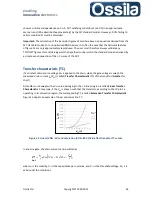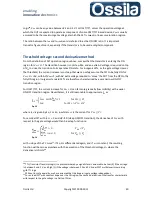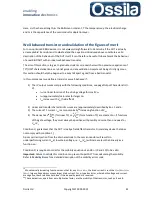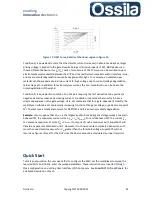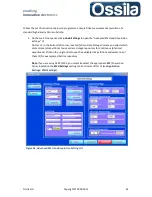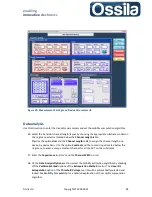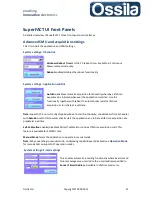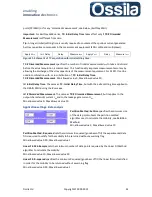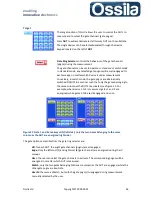
enabling
innovative
electronics
Ossila Ltd
Copyright © 2009-2015
42
Here,
L
is the channel length,
k
b
the Boltzmann constant,
T
the temperature,
q
the electrical charge
and
C
D
is the capacitance of the semiconductor depletion layer.
Well-behaved transistor and validation of the figures of merit
For non-optimised R&D devices, it is not always straightforward to determine if the DUT is actually
an ‘acceptable’ transistor and to what extend the equations introduced above constitute a valid
description of the behaviour of the DUT itself. It can therefore be useful to benchmark the behaviour
of a real R&D DUT with an ideal
well-behaved
transistor.
The aim of this section is to give to graduate students or researchers with no previous experience of
TFT/OFET characterisation a very brief guide on data validation. Despite not being strictly rigorous,
this section should help the beginner to easily tell apart a good from a bad transistor.
In this user manual, we define a transistor as well-behaved if:
1)
The IV output curves comply with the following conditions, see page Output Characteristic
(I-
V)
I
DS
is a linear function of the driving voltage for small V
DS
I
DS
(approximately) saturates for larger V
DS
I
DS
increase with V
GS
(field effect)
2)
Linear and transfer characteristic curves are (approximately) described by Eqs. 1 and 6,
3)
The current TC current I
DS
is a monotonically
16
increasing function of V
GS
4)
The derivatives
17
(for linear TC) or
(for saturation TC) are constant or, if functions
of the gate voltage, they must always be positive with possibly no more than one peak for
V
GS
>V
T
Condition 1) guarantees that the DUT is really a field effect transistor. Discard any device that does
not comply with condition 1).
A poor carrier injection from the drain electrode to the semiconductor will results in
underperforming current I
DS
at low drain voltage, i.e. I
DS
(V
DS
) will increase less-than linearly as a
function V
DS
.
Condition 2) is required in order for the mobility equations 4 and 8 or (9 and 10) to be valid.
Important:
Failure to satisfy this condition can prevent SuperFACT from calculating the mobility.
Refer to
Mobility Errors
for a detailed description of the mobility errors code.
16
Monotonically increasing function means that for any V
GS,1
< V
GS,2
, the drain current is such that I
DS
(V
GS,1
)< I
DS
(V
GS,2
): large voltage always means larger drain current. For p-type transistor, where both voltage and current
are negative, these relations hold true if the inequality symbol is reversed.
17
These derivatives, apart from a multiplicative factor, are the mobility of the transistor, see Eqs. 4 and 8.




